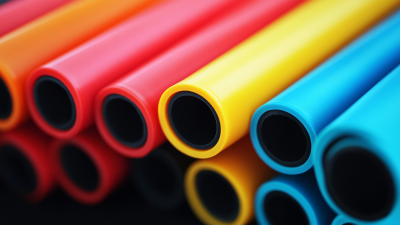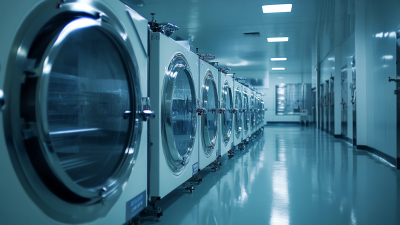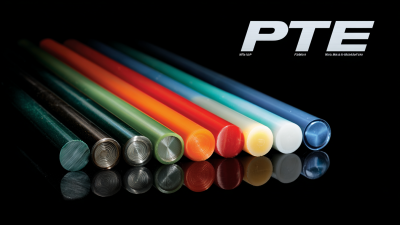- Home
- Products
- Services
- Product concept development
- Engineering
- Design for manufacturability
- Regulatory services
Read more - Material selection and formulation
- Prototyping
- Testing and validation
Read more - Production process development
- Custom tooling
- Manufacturing
- Finishing operations
- Assembly
- Packaging
- Private labeling
- Sterilization
Read more
- Resources
- Careers
- Search
Exploring Advanced Applications of Medical Heat Shrink Tubing in Healthcare Innovations
 The healthcare sector is continuously evolving, driven by innovations that enhance patient care and operational efficiency. Among these innovations, Medical Heat Shrink Tubing has emerged as a crucial component, playing a vital role in various applications such as cable insulation, fluid containment, and device protection.
According to a recent market analysis by Research and Markets, the global medical tubing market is poised to reach $9.47 billion by 2026, with heat shrink tubing representing a significant segment due to its superior properties, including chemical resistance and electrical insulation.
As healthcare providers seek to optimize their tools and technologies, the advanced applications of Medical Heat Shrink Tubing are being increasingly recognized for their potential to improve device integrity and performance while also ensuring compliance with rigorous regulatory standards.
This exploration of its advanced applications highlights not only the versatility of this material but also its critical impact on the future of healthcare innovations.
The healthcare sector is continuously evolving, driven by innovations that enhance patient care and operational efficiency. Among these innovations, Medical Heat Shrink Tubing has emerged as a crucial component, playing a vital role in various applications such as cable insulation, fluid containment, and device protection.
According to a recent market analysis by Research and Markets, the global medical tubing market is poised to reach $9.47 billion by 2026, with heat shrink tubing representing a significant segment due to its superior properties, including chemical resistance and electrical insulation.
As healthcare providers seek to optimize their tools and technologies, the advanced applications of Medical Heat Shrink Tubing are being increasingly recognized for their potential to improve device integrity and performance while also ensuring compliance with rigorous regulatory standards.
This exploration of its advanced applications highlights not only the versatility of this material but also its critical impact on the future of healthcare innovations.
The Role of Medical Heat Shrink Tubing in Modern Healthcare Solutions
Medical heat shrink tubing has become an indispensable component in modern healthcare solutions, playing a critical role in the insulation and protection of medical devices. According to a report by MarketsandMarkets, the global medical tubing market is expected to reach USD 6.5 billion by 2026, driven by the growing demand for minimally invasive surgical procedures and customizable medical devices. This growth reflects the increasing reliance on advanced materials like heat shrink tubing, which provide durability and biocompatibility essential for patient safety.
In addition to enhancing device performance, heat shrink tubing acts as a protective barrier against environmental factors, preventing contamination while improving the longevity of medical instruments. A study published in the Journal of Medical Devices indicated that using heat shrink tubing results in a 20% reduction in device failure rates, highlighting its importance in maintaining the integrity of healthcare products.
**Tips:** When selecting heat shrink tubing, consider factors such as temperature tolerance, chemical resistance, and flexibility to meet specific application needs. Additionally, ensure compliance with regulatory standards, such as ISO 13485, which emphasizes quality management in medical device manufacturing. This diligence can significantly enhance product reliability and safety in healthcare innovations.
Advancements in Material Science for Enhanced Heat Shrink Tubing
The advancements in material science have significantly enhanced the capabilities of medical heat shrink tubing, leading to innovative applications in the healthcare sector. Recent reports from the Biomedical Engineering Society indicate that the global market for medical tubing is projected to reach approximately $3 billion by 2025, largely driven by the introduction of high-performance materials that improve compliance and durability. Innovations such as polyolefin and fluoropolymer-based heat shrink tubing are now capable of withstanding extreme temperatures and providing excellent chemical resistance, making them ideal for various medical applications including catheter manufacturing and electrical insulation for medical devices.

Moreover, these advancements also focus on biocompatibility and safety, addressing regulatory standards more effectively. According to a study by the Materials Research Society, newer formulations now exhibit lower toxicity and improved radiation resistance, which are crucial for long-term implantable devices. As a result, manufacturers are increasingly adopting advanced heat shrink tubing to enhance the overall performance and reliability of medical devices, aligning with the industry's push towards safer and more efficient healthcare technologies. The integration of these advanced materials not only fosters innovation but also contributes to better patient outcomes through improved device performance.
Applications of Heat Shrink Tubing in Biomedical Devices and Prosthetics
Heat shrink tubing has emerged as an essential component in the development of biomedical devices and prosthetics, offering both functional and protective solutions in healthcare innovations. This tubing, which shrinks when heated, forms a tight and secure bond around wires, connections, and components, significantly enhancing the reliability and longevity of medical devices. In biomedicine, its use in encapsulating delicate electronic components—such as sensors and circuits—ensures that these devices maintain their operational integrity in various environments, safeguarding them from moisture, dust, and mechanical stress.
Additionally, heat shrink tubing plays a crucial role in the customization and comfort of prosthetics. By providing a flexible yet durable interface between the prosthetic and the user’s body, it can be tailored to fit distinct anatomical shapes and movements, thus improving the overall user experience. This application not only enhances the aesthetics of prosthetics but also ensures that they are lightweight and comfortable for the wearer.
Furthermore, advancements in materials have led to the development of biocompatible heat shrink tubing that minimizes skin irritation, making it an ideal choice for long-term applications in healthcare solutions.
Innovative Uses of Heat Shrink Tubing in Drug Delivery Systems
Heat shrink tubing has emerged as a pivotal component in the advancement of drug delivery systems, showcasing its innovative applications within the healthcare sector. This versatile material exhibits unique properties that enhance the safety and efficacy of drug administration. By providing a protective barrier around sensitive pharmaceuticals, heat shrink tubing ensures that medications are delivered in a controlled manner, minimizing the risks of contamination and degradation. Its adaptability allows for customization, accommodating various drug formulations and delivery routes, from injections to implantable devices.
The growing emphasis on patient-centered care has catalyzed the integration of heat shrink tubing into novel drug delivery innovations. With the support of regulatory bodies, such as the National Medical Products Administration, the industry is responding to the increasing demand for more effective and reliable medical devices. As healthcare technologies continue to evolve, the role of heat shrink tubing in fostering advancements, such as sustained-release systems and targeted therapies, is becoming increasingly significant, promising a future of enhanced therapeutic outcomes for patients.
Case Studies: Successful Integration of Heat Shrink Tubing in Healthcare Technology
The integration of medical heat shrink tubing in healthcare technology has become pivotal due to its versatility and robustness in various applications. For instance, a study published by ResearchAndMarkets indicates that the global market for medical heat shrink tubing is expected to grow at a CAGR of 6.9% from 2021 to 2026, reaching USD 300 million by the end of this forecast period. This growth underscores the increasing demand for innovative healthcare solutions that require reliable materials, such as heat shrink tubing, which help in enhancing device performance and patient safety.

One prominent case study involves the use of heat shrink tubing in the development of advanced catheter systems. By employing medical-grade heat shrink tubing, manufacturers can create a more compact and durable design that not only improves the handling characteristics of the catheter but also significantly minimizes the risk of leaks and contamination. Another instance can be found in the customization of surgical instruments, where heat shrink tubing is used to insulate delicate wiring and enable better ergonomic designs. Such applications highlight the crucial role that heat shrink tubing plays in advancing healthcare technology, ultimately contributing to better patient outcomes and operational efficiencies in medical practices.
Related Posts
-

Essential Guide: 10 Key Considerations for Choosing Peelable Heat Shrink Tubing
-

Unleashing Global Opportunities at the 137th Canton Fair with Peek Extrusion Innovations
-

How to Choose the Right Steam Autoclave for Your Laboratory Needs
-

7 Essential Benefits of Using Peelable Heat Shrink Tubing in Your Operations
-

Unleashing China's Manufacturing Prowess in Autoclave Sterilization for Global Buyers
-

How to Select the Best PTFE Coated Mandrels for Your Manufacturing Needs






